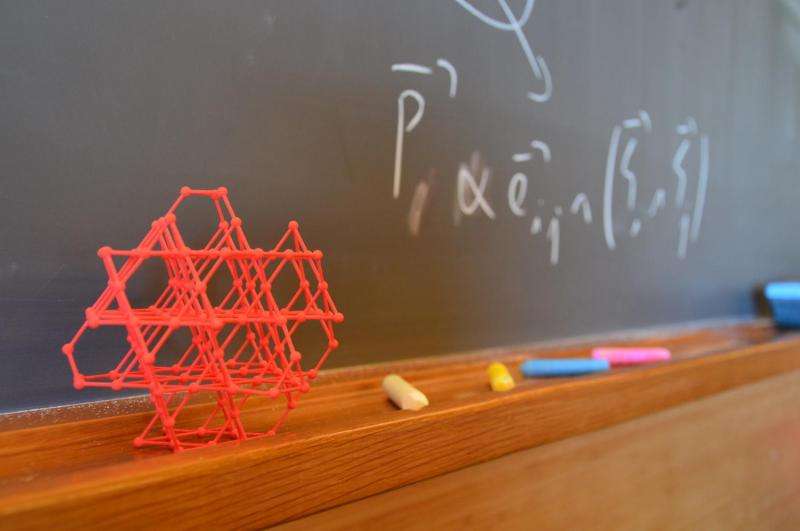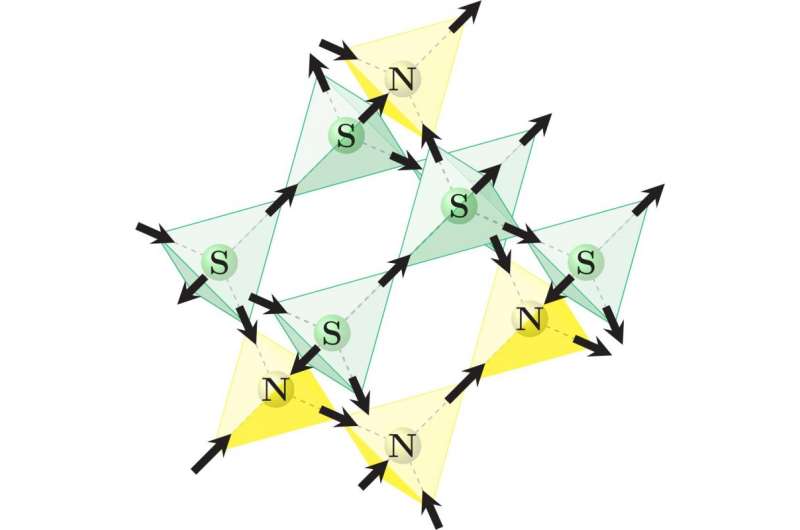Magnetic monopoles in spin ice crystals

Today one of the major goals of physicists is to unify the forces of nature into a Grand Unified Theory that could portray a more elegant and comprehensive representation of the Universe. One step towards this big theory comes from the hunt for and research on magnetic monopoles. A magnetic monopole is an isolated north pole or an isolated south pole. This concept defies our conventional expectations that separate magnetic monopoles cannot exist. Even if the existence of magnetic monopoles as elementary particles remains a fundamental open question, condensed-matter physicists have managed to reproduce artificial versions of these exotic particles in rare-earth oxide crystals called "spin ices". Dr Ludovic Jaubert, group leader in the Professor Nic Shannon's Theory of Quantum Matter Unit at the Okinawa Institute of Science and Technology Graduate University (OIST) together with Prof Roderich Moessner from the Max Planck Institute in Dresden gave a theoretical explanation for the observation of double-layer structure of magnetic monopoles in spin ices.
Back in the 19th century, James Clerk Maxwell took the first big step toward a unified theory, by linking electricity and magnetism with his famous electromagnetism laws. He observed that changing magnetic fields creates electric currents, and moving electric charges generates magnetic fields. However, while electric charges can be positive or negative, magnets always contain both a north and a south pole. For example, if you break a magnet apart, you end up with two magnets, both of which will always have a north and a south pole, never with an isolated north or south monopole. That was true until physicists found that the electrons in spin ices behave collectively like magnetic monopoles at temperatures close to absolute zero (0 Kelvin, -273 ºC). This finding is considered one of top discoveries of the last 10 years.
Spin ice is a class of materials with atoms arranged in four-sided pyramids called tetrahedra. These tetrahedra arrange into crystal structures called pyrochlores. Each of the 4 atoms at the vertex of the tetrahedral pyramid carries an internal tiny magnet also called spin, which is usually represented by an arrow pointing towards the north. The arrows in the figure show the North and South poles in spin ice.
A magnetic monopole is generated when a disturbance causes a spin to flip its orientation. Because each spin of a tetrahedron is also shared with a neighboring tetrahedron, the creation of magnetic monopoles spreads around the crystal like a fans' wave in a stadium, forming monopoles of opposite "magnetic charge".

These magnetic monopoles are not real particles, like electrons and protons, but they are referred to as quasi-particles, because they appear from the collective behavior of surrounding atoms and electrons and they effectively interact with each other.
Jaubert and Moessner calculated how spins interact together and with the magnetic field using Monte Carlo simulations and analytical calculations. They were able to calculate that spin ice can achieve a double layer configuration, formed by the alternation of 2 layers of tetrahedra with positive magnetic charges and 2 layers of tetrahedra with negative magnetic charges. Normally this would be very unstable, in the same way that the north pole of one magnet repels the north pole of another magnet when you want to place them next to each other. Jaubert and Moessner found that the double layer configuration can be stabilized thanks to the electric polarization. Jaubert explains: "When I was looking to see if a similar phenomenon has already been described, I was glad to see that some other research groups around the world obtained the same results experimentally using spin ice made of terbium in the presence of a strong magnetic field at temperatures close to absolute zero. We were able to explain theoretically, what was considered an experimental mystery". Each magnetic monopole comes with an electric dipole, but for most materials the electric polarization is so small that it cannot be seen. Jaubert and Moessner discovered that in terbium titanate (Tb2Ti2O7) spin ice crystals the electric polarization can be big enough to be seen and to stabilize the double layer of magnetic monopoles.
"I think that spin ice is the spring board to look for more exotic outcomes in other materials" concludes Jaubert. In the future, he would like to study crystals made of other atoms, where laws beyond electromagnetism could emerge.
More information: L. D. C. Jaubert et al. Multiferroicity in spin ice: Towards magnetic crystallography of in a field , Physical Review B (2015). DOI: 10.1103/PhysRevB.91.214422
Journal information: Physical Review B
Provided by Okinawa Institute of Science and Technology





















